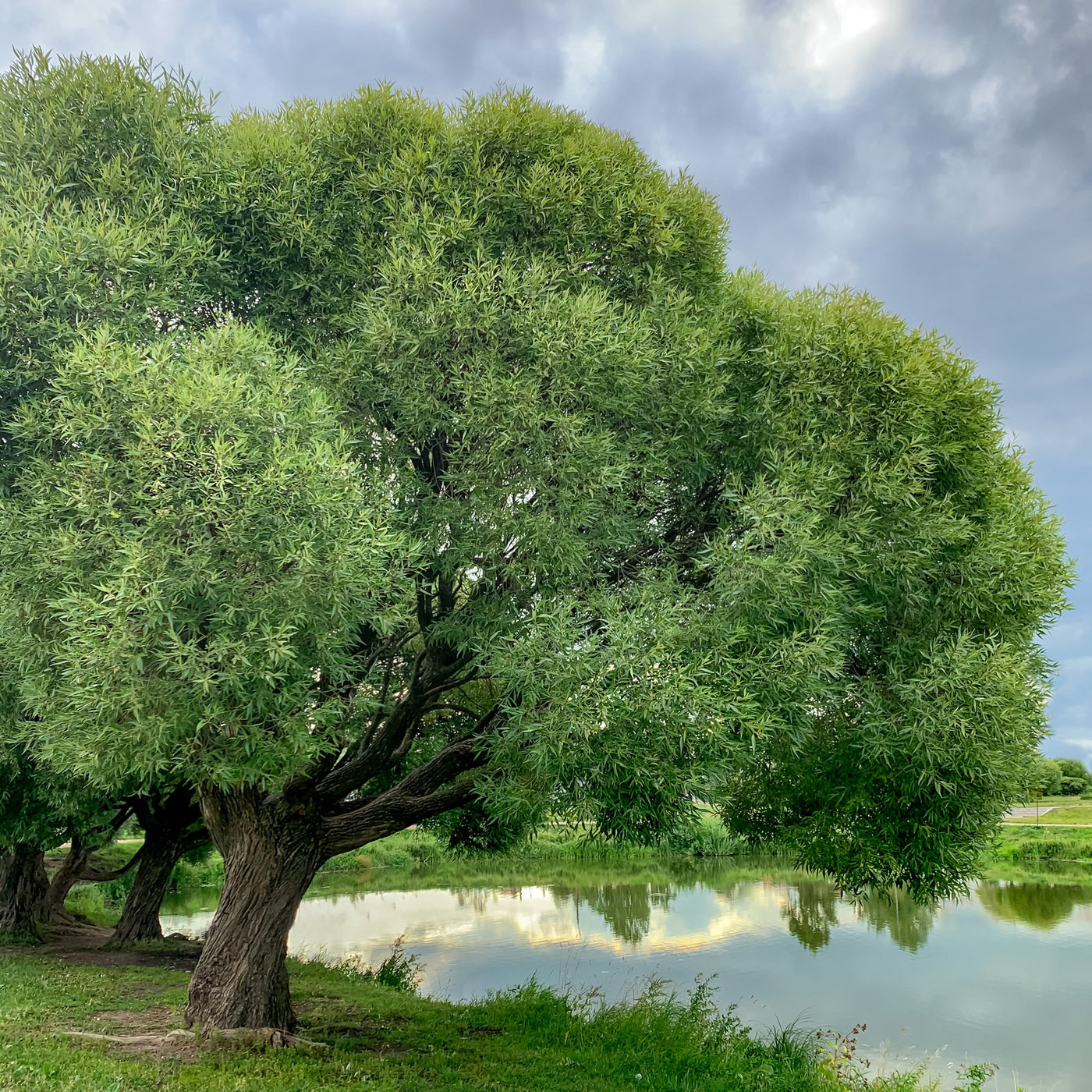The Remarkable Black Willow
Salix nigra (Black Willow) stands as a historical cornerstone in North America through its deep connection with both natural ecosystems and human development. This species naturally thrives throughout central and eastern parts of the continent where rivers, swamps, and floodplains dominate the landscape. Native peoples acknowledged the value of the tree early on by utilizing its wood to create tools, shelters, and canoes. The durability of Salix nigra wood allowed European settlers to incorporate it into their building practices for furniture creation and construction of both fence posts and structures resistant to moisture.
During the 18th century botanists began the scientific documentation of this species while categorizing the diverse plant life of North America. Throughout their exploration of North America’s extensive untamed regions Salix nigra became notable for its hardy nature and fast growth which enabled it to survive in erosion-prone and seasonally flooded terrains. Industries helped increase the value of this species when they started using its wood for lightweight construction materials and producing charcoal and pulpwood.
Black Willow Traditional and Modern Medical Uses
Black Willow’s medicinal properties stand out as one of its most notable characteristics. Long before modern pharmacology emerged indigenous peoples recognized the healing potential of this plant. Salicin which serves as the essential ingredient for aspirin is found in the bark of this tree. Native American tribes used teas made from the inner bark or chewed the inner bark to treat fevers and reduce pain and inflammation. Ancient practices established a framework for scientific research that generated commercial pain relief products.
Herbalists continue to utilize this tree's extracts because they produce analgesic and anti-inflammatory effects. The plant Salix nigra serves as a traditional treatment for joint pain, headaches and cold symptoms. The tree's astringent properties enable its use in skin condition treatments by reducing both swelling and irritation. Modern medicine has developed synthetic versions of these benefits, but the plant continues to demonstrate its healing abilities in various applications.
A Vital Addition to Landscapes
Salix nigra stands out as a premier choice for landscaping purposes despite its historical and medicinal heritage. Moisture-rich environments support the growth of this species making it ideal for protecting riverbanks and stopping soil erosion. The plant's extensive root system secures unstable soils, which helps prevent flood damage and limits sediment entering nearby watercourses.

This species is a popular choice for large-scale landscaping projects because of its fast growth and shade-producing capabilities. The elegant sweeping shape of this tree creates an attractive element for parks and wetland restoration sites along with backyard gardens that have adequate space. This tree thrives in poor soils and wet environments which enables it to grow where other trees cannot establish themselves. Its resilience to seasonal floods makes it essential for conservation work because it protects against environmental damage.
Black Willow Graceful Appearance and Seasonal Beauty
Black Willow stands upright with an elegant posture that weeps slightly to create a stunning visual form. This species grows to a height between 30 and 60 feet while developing a wide-open canopy that produces soft shade. The tree displays a unique visual transformation through its narrow lance-shaped leaves which shift from bright green during spring to golden yellow in autumn.
Its deeply furrowed dark brown bark enhances its rustic appeal alongside its slender branches which move freely in the breeze. In springtime, delicate catkins become visible which add subtle texture to the tree's appearance. The tree exhibits understated elegance through its graceful movement which generates a serene natural atmosphere wherever it stands.
Rare Wildlife It Attracts
The species provides essential habitat conditions for numerous wildlife species thus playing a fundamental role in sustaining biodiversity. This species serves as an ideal habitat for pollinators and specialist organisms that rely on wetland ecosystems. In early spring food scarcity attracts both bees and butterflies to catkins. Warblers and other migratory birds build their nests among its branches because the dense foliage offers them protection.
The viceroy butterfly (Limenitis archippus), which deposits its eggs among the foliage makes its presence remarkable. Viceroys have developed a specialized dependence on this tree for survival which differs from other butterfly species that need multiple host plants. Aquatic birds find essential nesting sites in its branches and roots while beavers use its wood for their dam and lodge construction. The interactions demonstrate how this tree plays a crucial role in maintaining sensitive ecosystems and providing support for uncommon wildlife species.
Black Willow Strength and Resilience in Harsh Conditions
Black Willow stands as an exceptionally resilient tree species within riparian environments through its superior adaptive capabilities. The tree grows successfully through USDA hardiness zones 4-9 because it can survive severe cold and intense heat.